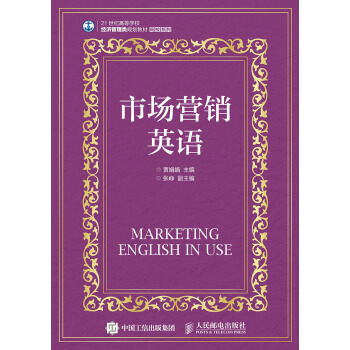- 武汉大学出版社
- 9787307137127
- 158698
- 2014-07
- H315
内容简介
《新思路英语写作》由长期从事英语写作教学的一线教师(刘晓萍)基于以校为本的英语写作课堂教学改革研究与实践精心编写而成,改变了写作课堂上先理论讲解、后例文分析和欣赏的传统模式。本书以课堂活动和练习为主,讲练结合,以练为主,让学生讨论总结段落发展方法、文体特点、篇章结构以及措词技巧等,充分调动学生的积极性和主观能动性,体现了以学生为学习主体的指导思想。为了让学生在顺畅的阅读中培养英语写作思维方式、品味地道的英语表达,本书精心选取例文,并注释出文中的词汇和短语,意在实现无词汇障碍阅读。本书还体现了灵活性原则,从最基础的词法和句法到Readina forWriting中语言积累和写作知识的拓展,兼顾各层次学生的需求,教师在使用过程中,可以根据学生程度有所选择和侧重。
目录
Chapter 1 Choice of Words
1.1 Using Appropriate Words
1.2 Using Exact Words
1.3 Overcoming Chinglish
Keys for Reference
Chapter 2 Sentence Skills
2.1 Basic Sentence Structures
2.2 Sentence Extensiofi Ⅰ
2.3 Sentence Extension Ⅱ
2.4 Common Errors
Keys for Reference
Chapter 3 Paragraph Writing
3.1 Organizing a Paragraph
3.2 Paragraph Unity
3.3 Paragraph Coherence
3.3.1 Transitional Words
3.3.2 Pronouns and Repetition of Words
3.3.3 Synonyms
3.3.4 Parallel Sentence Structure
3.3.5 Logical Order in Organization
3.4 Paragraph Development Methods
3.4.1 Paragraph Development by Listing
3.4.2 Paragraph Development by Examples
3.4.3 Paragraph Development by Comparison
3.4.4 Paragraph Development by Contrast
3.4.5 Paragraph Development by Definition
3.4.6 Paragraph Development by Classification...
3.4.7 Paragraph Development by Space and Time
3.4.8 Paragraph Development by Process Description
3.4.9 Paragraph Development by Cause and Effect
3.4.1 0 Paragraph Development by Generalization
Keys for Reference
Chapter 4 Essay Writing
4.1 Criteria of a Good Essay
4.2 Typical Structure of an Essay
4.2.1 The Beginning
4.2.2 The Body
4.2.3 The Conclusion
4.3 The Writing Process
4.3.1 Prewriting
4.3.2 Developing an Effective Thesis Statement
4.3.3 Writing the First Draft
4.3.4 Revising the First Draft
4.3.5 Editing
4.4 Description Writing
4.4.1 Features of Description Writing
4.4.2 Ways to Organize a Descriptive Essay
4.4.3 A Technique for Effective Description--Show, Not Tell
4.4.4 Description of a Person
4.4.5 Description of a Place
4.4.6 Description of a Scene
4.5 Narrative Writing
4.5.1 Basic Elements in a Narrative
4.5.2 Characteristics of a Narrative
4.6 Exposition Writing
4.6.1 Development by Illustration
4.6.2 Development by Process
4.6.3 Development by Comparison and Contrast
4.6.4 Development by Cause and Effect
4.6.5 Development by Definition
4.6.6 Development by Division and Classification
4.7 Argumentation Writing
4.7.1 Essential Elements of Argumentation
4.7.2 Strategies for Argumentation
4.7.3 General Patterns of an Argumentative Essay
Keys for Reference
Chapter 5 Practical Writing
5.1 Emails
5.1.1 The Header
5.1.2 Body
5.1.3 Samples for Various Purposes
5.2 Notes
5.2.1 The Composition of a Note
5.2.2 Samples for Various Purposes
5.3 Notices
5.3.1 The Composition of a Notice
5.3.2 Samples for Various Purposes
5.4 Invitations
5.4.1 The Composition of an Invitation
5.4.2 Samples for Informal Invitation
5.4.3 Samples for Formal Invitation
5.4.4 Reply to an Invitation
5.5 Public Speaking
5.5.1 The Composition of a Speech Introduction
5.5.2 The Composition of Speech Body
5.5.3 The Composition of Speech Conclusion
5.5.4 Skill-tips
5.6 Curriculum Vitae
5.6.1 The Composition of CV
5.6.2 Skill-Tips
5.6.3 Samples
Keys for Reference
Chapter 6 Writing for Examination
6.1 College English Test
6.1.1 The CET Scoring Criteria
6.1.2 Appreciation of Good CET Compositions
6.2 The National Graduate Entrance Test of English
6.2.1 The NGETE Scoring Criteria
6.2.2 Appreciation of Good NGETE Compositions
Keys for Reference
Chapter 7 Readings for Writing
7.1 Expositional Readings
7.2 Narrative Readings
7.3 Descriptive Readings
7.4 Argumentative Readings
References
1.1 Using Appropriate Words
1.2 Using Exact Words
1.3 Overcoming Chinglish
Keys for Reference
Chapter 2 Sentence Skills
2.1 Basic Sentence Structures
2.2 Sentence Extensiofi Ⅰ
2.3 Sentence Extension Ⅱ
2.4 Common Errors
Keys for Reference
Chapter 3 Paragraph Writing
3.1 Organizing a Paragraph
3.2 Paragraph Unity
3.3 Paragraph Coherence
3.3.1 Transitional Words
3.3.2 Pronouns and Repetition of Words
3.3.3 Synonyms
3.3.4 Parallel Sentence Structure
3.3.5 Logical Order in Organization
3.4 Paragraph Development Methods
3.4.1 Paragraph Development by Listing
3.4.2 Paragraph Development by Examples
3.4.3 Paragraph Development by Comparison
3.4.4 Paragraph Development by Contrast
3.4.5 Paragraph Development by Definition
3.4.6 Paragraph Development by Classification...
3.4.7 Paragraph Development by Space and Time
3.4.8 Paragraph Development by Process Description
3.4.9 Paragraph Development by Cause and Effect
3.4.1 0 Paragraph Development by Generalization
Keys for Reference
Chapter 4 Essay Writing
4.1 Criteria of a Good Essay
4.2 Typical Structure of an Essay
4.2.1 The Beginning
4.2.2 The Body
4.2.3 The Conclusion
4.3 The Writing Process
4.3.1 Prewriting
4.3.2 Developing an Effective Thesis Statement
4.3.3 Writing the First Draft
4.3.4 Revising the First Draft
4.3.5 Editing
4.4 Description Writing
4.4.1 Features of Description Writing
4.4.2 Ways to Organize a Descriptive Essay
4.4.3 A Technique for Effective Description--Show, Not Tell
4.4.4 Description of a Person
4.4.5 Description of a Place
4.4.6 Description of a Scene
4.5 Narrative Writing
4.5.1 Basic Elements in a Narrative
4.5.2 Characteristics of a Narrative
4.6 Exposition Writing
4.6.1 Development by Illustration
4.6.2 Development by Process
4.6.3 Development by Comparison and Contrast
4.6.4 Development by Cause and Effect
4.6.5 Development by Definition
4.6.6 Development by Division and Classification
4.7 Argumentation Writing
4.7.1 Essential Elements of Argumentation
4.7.2 Strategies for Argumentation
4.7.3 General Patterns of an Argumentative Essay
Keys for Reference
Chapter 5 Practical Writing
5.1 Emails
5.1.1 The Header
5.1.2 Body
5.1.3 Samples for Various Purposes
5.2 Notes
5.2.1 The Composition of a Note
5.2.2 Samples for Various Purposes
5.3 Notices
5.3.1 The Composition of a Notice
5.3.2 Samples for Various Purposes
5.4 Invitations
5.4.1 The Composition of an Invitation
5.4.2 Samples for Informal Invitation
5.4.3 Samples for Formal Invitation
5.4.4 Reply to an Invitation
5.5 Public Speaking
5.5.1 The Composition of a Speech Introduction
5.5.2 The Composition of Speech Body
5.5.3 The Composition of Speech Conclusion
5.5.4 Skill-tips
5.6 Curriculum Vitae
5.6.1 The Composition of CV
5.6.2 Skill-Tips
5.6.3 Samples
Keys for Reference
Chapter 6 Writing for Examination
6.1 College English Test
6.1.1 The CET Scoring Criteria
6.1.2 Appreciation of Good CET Compositions
6.2 The National Graduate Entrance Test of English
6.2.1 The NGETE Scoring Criteria
6.2.2 Appreciation of Good NGETE Compositions
Keys for Reference
Chapter 7 Readings for Writing
7.1 Expositional Readings
7.2 Narrative Readings
7.3 Descriptive Readings
7.4 Argumentative Readings
References



